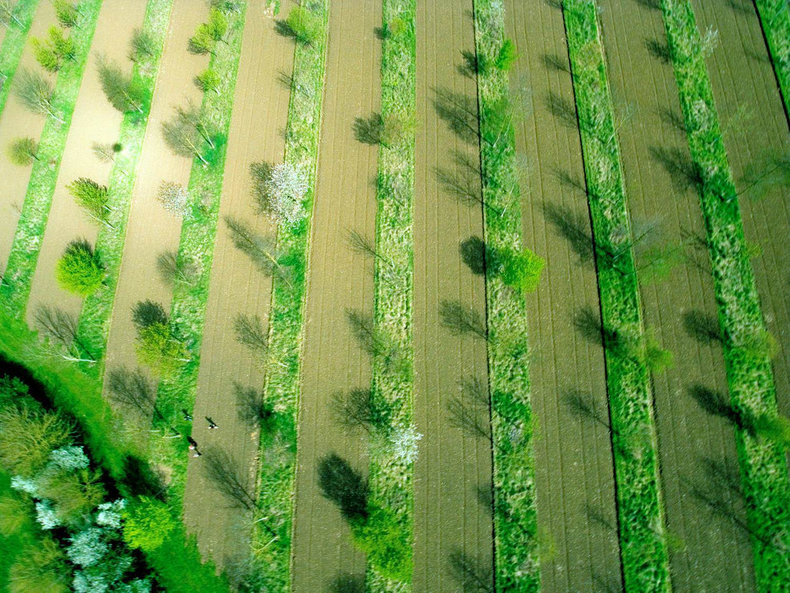
Pests
Companion plants may deter pests or act as a habitat for beneficial organisms that consume pests. For example, marigolds are thought to deter aphids with their smell. Marigolds also host the larvae of hoverflies that are predators of aphids.Trap Crops
Companion plants that become the target of pests to distract a pest from a crop. For example, alfalfa planted in strips alongside cotton to draw away lygus bugs.Fertilizer
Creating a fertilizing effect. For example, mosquito ferns are traditionally planted with rice crops in China because they host bacteria that fixes nitrogen from the air.Trellis
Using one plant as a trellis for another. For example, corn stalks that serve as a trellis for beans to climb.Cover Crop
Crops that are planted to reduce soil erosion and increase the retention of water. For example, nitrogen-fixing plants such as common vetch may be planted with rye to improve soil conditions.Green Manure
Companion plants are often ploughed under and incorporated into the soil as a mulch and soil amendment.Yield
Intercropping is the practice of growing two or more crops in close proximity to increase yield by making use of resources such as physical space, nutrients, water and sunlight that would not be utilized by a single crop. For example, Native Americans traditionally grew corn, beans and squash together to increase yields. These are known as the Three Sisters. Intercropping is still commonly practiced with farmers experimenting with combinations and measuring yield. In many cases, intercropping outperforms a single crop.Quality
Artisanal crops may make use of companion planting to improve quality such as taste. For example, basil is said to improve the taste of tomatoes. This is mostly cultural or perhaps marketing as opposed to scientific as quality parameters such as taste are difficult to quantify reliably. However, it is certainly true that crops can impact each others taste by modifying conditions and competing for resources.Pollination
Using one crop to attract pollinators. For example, Native Americans in the Southwestern United States historically used the Rocky Mountain bee plant together with the Three Sisters to attract bees that pollinated the beans and squash.Intensive Planting
Planting crops at high density to leave no resources for weeds. This often involves a companion plant as these allow for great a density of planting. For example, a top layer of fruit trees, middle layer of vegetables and bottom layer of herbs.Diversification
Reducing the risk of a crop failure with different crops that can survive different conditions.Protective Shelter
A crop that serves as a wind break for smaller plants. For example, it is common to make use of vertical space and light with a three-tier planting of coconut trees, banana and pineapples. In some cases, a fourth tier of herbs is added closest to the ground. The larger plants serve to protect the smaller plants from harsh weather and ensure that resources such as sunlight are used efficiently.Notes
In many cases, companion crops are known to increase yield and decrease pests without anyone knowing exactly why.Some companion crops are claimed to work in gardens but do not scale well. As such, experiments in a test garden may not produce the same results across many acres of land. For example, a large crop is a more attractive target for pests that is harder to defend than a garden.Companion crops are an active area of research due to interest in organic farming with an increasingly large body of knowledge available to farmers and gardeners.| Overview: Companion Planting | ||
Type | ||
Definition | The planting of different crops in close proximity to improve results. | |
Related Concepts | ||





























